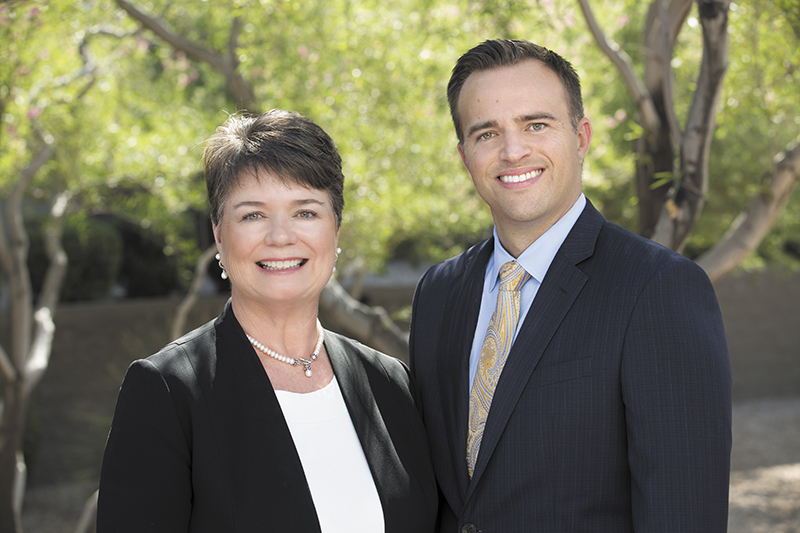By Renee A. Hanson, Private Wealth Advisor, Affinity Wealth Advisory Group, a private wealth advisory practice of Ameriprise Financial Services, LLC
The exhilarating anticipation of ticking up the roller coaster is quickly followed by the screams of the downward spiral to its eventual stop. We know the ride, yet we will stay the course because we know the ride will end – not just because we are locked in our seats for the duration. Understanding the outcome helps us tolerate the ride, and even enjoy most of it. But if you add uncertainty, the ride has a different feeling. No matter how often you tell yourself the ride will end, the uncertainty creates emotions.
As an investor you may read about the ups and downs of the stock market and it may feel like a roller coaster. History shows us that previous market corrections have ended. Yet even armed with the data, your emotions seem to contradict your good judgement. This internal conflict may cause you to flip day to day from staying the course and ignoring uncertainty or selling off to reduce the risk. If we look at historical charts of the markets, we can project ahead to presume the outcome of the current correction. These rational thoughts of historical data somehow still may not communicate calm to the heart and stomach. Big market moves may seem less tolerable and there is no locking bar to keep us in place. The choice is ever constant – stay the course or stop the uneasiness. Will data or emotions rule your decision?
This is volatility. Volatility is a statistical measure of standard deviation or dispersion of returns. What it means to you is the experience of the daily fluctuations of your holdings or your account balance. It creates emotions as we see what has happened and we project the uncertainty in our thoughts of what is yet to come. Did you know that the Chicago Board of Options Exchange (CBOE) created a volatility index (VIX), which is a measurement of the markets expected future volatility? Does your financial advisor discuss volatility with you and prepare you for market corrections?
To you, market volatility may be very strong emotions of the threat of losing something important to you. Money helps provide a lifestyle and sense of security, which is important to most of us. When you feel threatened by the risk of reduced purchasing power or the ability to protect those people or things important to you, the feeling is real.
In the world of investments, volatility may challenge one’s ability to accept risk or tolerate the volatility. It is important to understand one’s own risk tolerance to identify how much to accept or how much risk to avoid. A common practice before developing an investment portfolio is to quantify your risk by completing a risk questionnaire or risk quiz to determine your personal risk tolerance. Your personal risk tolerance is the amount of volatility you are willing to accept. Market volatility as we have recently experienced may cause you to rethink what you are truly willing to accept in relation to risk. A word of caution – risk tolerance should not be tied to short-term experiences or emotions. Risk tolerance is a representation of your willingness to accept risk, or volatility. During periods of volatility, some are inclined to second-guess their risk tolerance. Financial experts encourage investors to make long-term decisions not market cycle decisions. If you find yourself always changing your risk to suit conditions, you are likely not investing toward your goals. You are allowing your emotions to act. Time in the market has historically offered greater success than timing the markets.
What you may not know is that risk is something you can control. How? By aligning your values, goals, risk tolerance, and time horizon to develop a risk-mitigated portfolio that is reflective of these in order to reduce your exposure to volatility.
Diversification – not having all your eggs in one basket – can help mitigate risk. What is diversification though? Is diversification having accounts at different institutions? Or is it having several managers? Or is diversification having different asset classes for asset allocation?
At the highest-level, diversification begins with a mix of stocks and bonds. A moderate investor, let’s call them Ed and Joan, may decide that a 50/50 allocation suits their risk tolerance, provides adequate return to maintain their lifestyle, and helps them stay aligned to their values (family, security, health, spirituality, and autonomy). In theory, having one stock and one bond would meet the 50/50 allocation. But common sense says that’s not enough “eggs.” To diversify the bonds, Ed and Joan may purchase Treasuries, Corporates, Municipals, or Emerging Market debt, to name a few. To diversify stocks, they may purchase Large Capitalized companies (big companies), Mid Cap, Small Cap, Foreign, or Emerging Markets for example. In addition, Ed and Joan may be interested in holding companies in different industries or sectors such as financials, utilities, healthcare, technology, healthcare, to name a few for further diversification.
Returning to the questions of appropriate diversification, it is not the number of institutions, because if each institution is doing the same thing, there is no diversification. As you can see, this also explains why simply using different managers may not meet your diversification needs. If they are all managing to a similar style, they are all doing the same thing just in different locations.
What does this mean to you? Having a clear understanding of what your money is meant to do for you can help you diversify in a meaningful way. In addition, an adequate cash reserve can help you maintain the integrity of your well-diversified portfolio to ride through market corrections.
Cash reserves are meant to handle emergencies and, during your distribution phase of life, to provide comfort in knowing you won’t need to sell during downturns to meet your living needs. Being prepared for market corrections (there will be another one) can help you remember what is important to you and maintain your strategy for financial comfort during market volatility.
When thinking about risk acceptance consider what your goals are and what is important to you. Align those with your risk tolerance. As you look at managing your fears volatility, keep in mind that mindset can play an important role in your investment ride. Find a trusted financial advisor who can balance emotional responses to market conditions, current events, and personal life changes with knowledge of past market responses and ways to manage risks. This will help keep you focused on your long-term goals with increased confidence of success.
Affinity Wealth Advisory Group is a private wealth advisory practice of Ameriprise Financial Services, LLC. that focuses on helping clients navigate through major life transitions – such as divorce, retirement, career changes, and widowhood – to find their new normal. We help individuals clarify and prioritize what they need and want to do and what is important to do (now, soon and later). This tailored guidance approach, leveraging the experience, knowledge, and passion, helps clients transition in a way that is both comfortable and effective. Learn more by calling 602-923-9800 or e-mailing [email protected].





